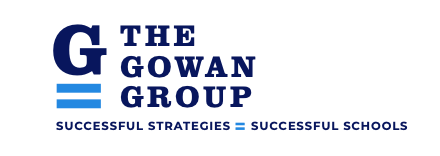The impetus behind this post is important to understand, perhaps more so than any of the other prior posts. We have discussed enrollment management, strategic planning, the role of the admissions director, being more data driven – but this post on value proposition is probably the most direct approach to turning prospective families into actual applications. It cuts to the chase and allows you to begin an evaluation of your message and learn why you need to communicate it clearly. Each school’s identity is made up of several things: mission statement, history of the school, teaching philosophy, to name a few. These are essential elements that help make up a community of learners. They do not make up the value proposition; that stands by itself. A value proposition is a statement that speaks directly to the value of a school’s program. It highlights a school’s core values; it differentiates your school from its competition, and it identifies the benefit of enrollment. And they come in all shapes and sizes. But they are usually one paragraph, two at the most and are never labeled as “A Value Proposition” but they live on one of the main pages of the website close to the mission.
Here is why the value proposition is so important for schools in the 21st century.
Some independent schools in our country were founded in the 1700’s. Many are over 100 years, 150 years, 200 years old. They have rich traditions and a school culture that spans back many years. Marketing is not one of those traditions. Rather, it is a new journey and one school’s do not do very well.
All schools have their rituals, routines and ruts. Rituals are never to be changed, like a graduation ceremony or the passing of the senior rings to juniors. Routines are more like dress codes or schedules: they change every so often to better reflect the times or new philosophy. Ruts are things that schools have done for so long and don’t even know they are doing them or that they don’t work, but they continue doing them anyway because that is the way it has always been done. Marketing in schools is a rut. For hundreds of years schools did not need to market their strengths. Family’s came every year and the applications followed. Seats were filled. Very little effort needed to be exerted to fill the seats. Times have changed and we now need to be more direct as ever, purposely working towards a full school. And it’s not easy. Schools cannot simply rest on their laurels anymore.
The top five reasons why your school’s Value Proposition is king:
- Current State of Our Economy
We saw a tremendous downturn in our economy in 2008 and our enrollments suffered because families were scared to spend their money. After a recent, slight recovery, we are seeing that families are willing to spend their money again. The difference this time is that “value" is of the utmost importance. Millennials are value shoppers where they must be entirely convinced that they will get their money’s worth. Schools can communicate this through their value proposition.
- Competition From Other Schools
The competition from others schools is tougher than ever. With more school options like other private schools with similar missions, Charter Schools, Religious Schools and the free, public choice down the road, parents have many schools from which to choose. Your School’s Value Proposition will differentiate your school from the competition.
- Tuition Driven Budgets
The majority of independent schools are at least 80% tuition driven, which means every tuition dollar counts. For schools to deliver the program they market, they need to meet the budget. They need to train and pay those fabulous faculty members, have the latest technology, and support the infrastructure that every school must have. Your School’s Value Proposition will help solidify applications and turn them into active families.
- Communication Has Changed
Our attention span has decreased dramatically over the years. Prospective parents read in sound bytes, which means schools have very little time to get their point across. And if prospective students are reviewing the website, you have even fewer moments because they don’t stick around long and want to be entertained. Videos that communicate your value proposition are very effective.
- Families Are Value Driven
They can afford to be picky now because it is a buyer's market. Schools are competing for students. Our current, competitive culture has made our prospective families even more results driven. They want value in everything and they want to see results immediately. Your School’s Value Proposition can exhibit those results.
